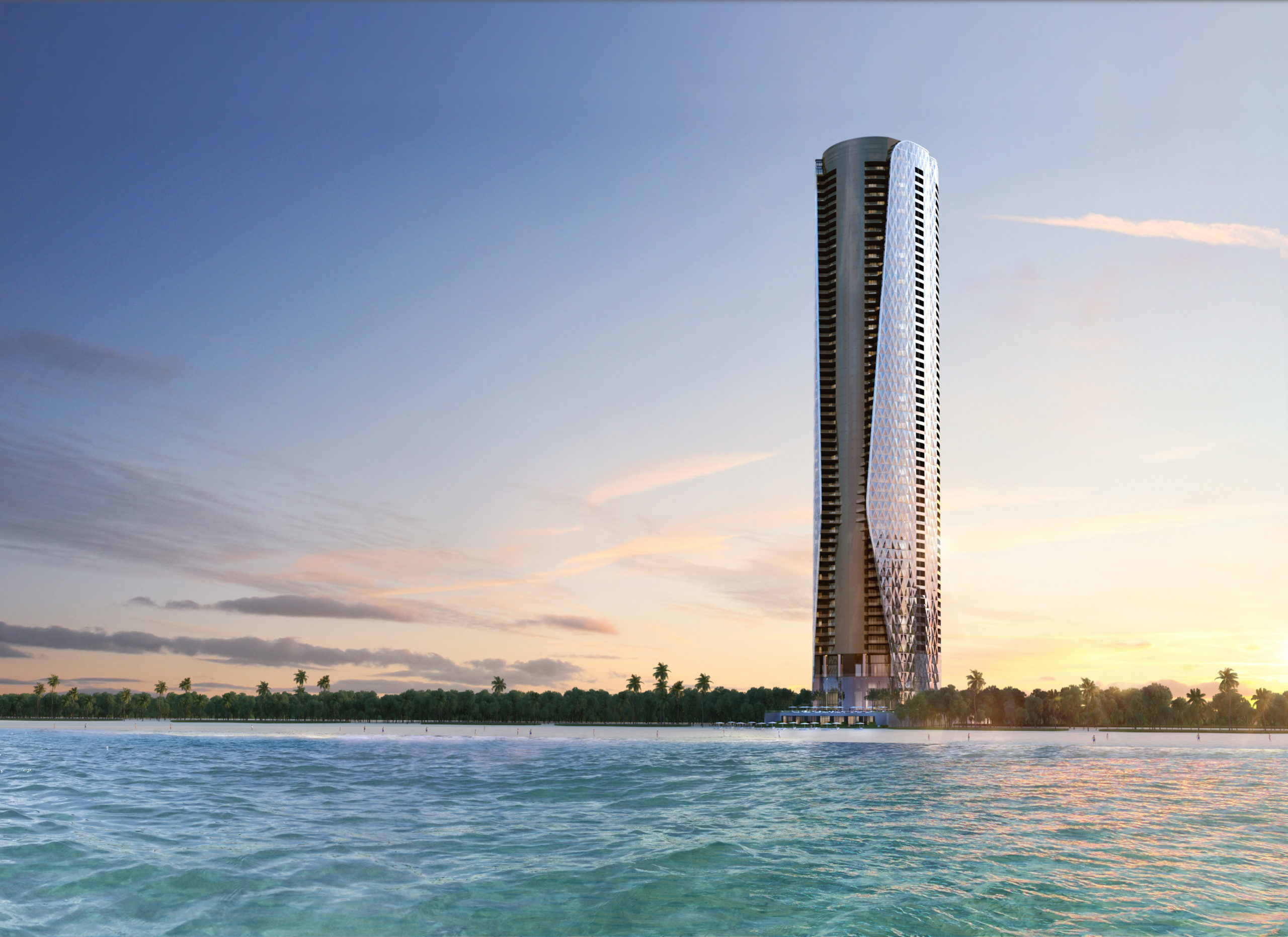As the residential and commercial competition for tenants, buyers, and guests continues to be fierce across every sector of the post-pandemic built environment, the arms race for new technology, frictionless efficiencies, and singular experiences is also playing out as a show of upmanship between developers.
Real Estate Cross-Pollination
Some of this has manifested in hybridization of previously distinct sectors. Hotels are experimenting with coworking spaces while Class-A and trophy-class office buildings are embracing hospitality-style amenitization—as are healthcare facilities. Luxury apartments tout services, retail, dining, and entertainment as part of the in-building experience, while others have embraced the workplace side of things, featuring high-speed internet and in-unit home offices, particularly as more high earners have the opportunity to live far from their coworkers amid the work-from-anywhere trend.
At the same time, some snowbirds are also seeing the benefit of having full offices in getaway destinations throughout the Sun Belt. Brand Atlantic, for example, is delivering a true live-work-play destination in Palm Beach at Banyan & Olive, an ambitious project that repurposes a classic South Florida Art Deco space at 111 Olive and delivers a new, ground-up, hospitality-driven office tower at next-door 300 Banyan. The project thoughtfully uses the signature look of the Clematis Street District to deliver an open, inviting community and commercial space as more companies see the logic in working where their teams want to relax.
In this sense, cities and neighborhoods are inherently cobranded with their commercial occupiers—and developers and companies are expanding their sense what makes a city great to work in. The blurring of lines between living, working, and leisure environments has, after all, been a long-term trend, accelerated, like many things, by the pandemic.
The Sky’s the Limit for Branded Residences
Branded residences offer another type of hybridization, turning the luxury home into an elevated, cobranded partnership that is more than the sum of its parts—and some more surprising than others. More than offering a slew of amenities, developers are trying to offer experiences that no amount of money can buy—unless you live in their buildings, of course.
As the demand for singular experiences increases with consumers, so has the demand for branded residences. A recent Knight Frank survey showed that 39 percent of respondents would be willing to pay a premium for branded residences. Similarly, Savill’s has clocked the growth in the number of branded residences at 170 percent over the past 10 years.
Hospitable Environments for Luxury
Given the rapid amenitization of luxury living, hotels are a natural fit for branded residences, bringing elevated, concierge services and, in some cases, blends of classic design and modern living that would be impossible to replicate elsewhere. Hospitality partners, unsurprisingly, are the most ubiquitous in the branded residence landscape, but there are some true standouts. The Towers at Waldorf are just such an example. Jean-Louis Deniot designed the residences with the hotel’s Art Deco flourishes to convey a singular sense of New York’s history in contemporary spaces.
The Residences at The St. Regis Chicago, meanwhile, are branded residences within the recently built St. Regis high rise, the third tallest building in the city. Taking a more modern approach, the expansive vistas make the greater Chicagoland area the background for some truly stunning contemporary design. Condo residents also have access to the hotel’s five-star amenities, as well as unique offerings such as a dog lounge and on-demand Teslas.
The Four Seasons is one of the longstanding leaders in this space, having successfully operated branded residences since 1985 and currently having a portfolio of 39 properties around the world. With the branded residential experience in such high demand, three quarters of future Four Seasons projects will include a residential component. Perhaps the most prominent of these is Silverstein Properties’ 30 Park Place, one of the tallest residential towers in New York. Designed by Robert A.M. Stern, the building is unique is unique in its classic façade that stands apart from the glass-and-steel trend that supertall skyscrapers are known for.
Rosewood Hotels & Resorts meanwhile is well into a long-term strategy that includes branded condos as well as rentals. The program includes Rosewood Reserve across its residential portfolio, including preferred rates on hotel rooms, spa access, food and beverage service, and global concierge access, among others. This global program is making inroads domestically, such as through their recent Miami Beach partnership with Michael Shvo, and Asia-Pacific, recently announcing a standalone residence in Phuket.
The King of Branded Residences
Amid this crowded landscape, standing out means really delivering something unique. This is where Gil Dezer, the King of Branded Residences, comes in. He has led the charge in turning Billionaire’s Row in Sunny Isles Beach into the global capital for next-level branded residences.
Owning more than 1,000 high-end cars with his father, Gil has a deep passion for automotive craftmanship. While a car-branded residence may seem out of the box, the partnerships make sense conceptually—the focus on detail, high-end craftmanship, and technological innovation. Dezer’s Porsche Design Tower offered amenities that were groundbreaking when the building debuted in 2016, such as private balconies with 15-foot-long pools and the Dezervator, a patented private car elevator that takes cars directly into individual residences. This is the kind of amenity that money can’t buy elsewhere—true privacy away from prying eyes and the ablity to showcase your car as a piece of art.
Dezer followed this up with Residences by Armani Casa, which also sold out quickly. His latest project, however, shows the heights to which these residences aspire—literally. The Bentley Residences are set to be the tallest oceanfront residential tower in the U.S. But more than this, the tower, which is now in presales amid the launch of a $10 million sales gallery, has delivered on perhaps the only complaint about Porsche Design Tower: residents wish they could fit in more cars.
Bentley Residences will all have capacity for three to four cars in the in-unit garages, while designs from the triangular glasswork façade to the interior design will be heavily influenced by flourishes found in Bentleys themselves. Plus, each residence still comes with an outdoor pool on each unit’s private outdoor terrace.
Residences Elevating Personal Brands
What the minds behind branded residences across the industry understand is that residents themselves are brands, now more than ever, and the popularity of these units is about more than unlocking creativity between developers and luxury; it represents an evolution in the ways people interact with brands and invite them into their lives. Emotional attachments to Coke or Pepsi, or Porsche or Bentley, are nothing new in and of themselves, but the emergence of influencer culture has given people the opportunity to stand on the shoulders of giants, elevating their own brands.
As one Porsche resident recently told the New York Post, “No matter where I travel in the world, when I tell people that I live in the Porsche building, they ask me about the car elevators.” That’s cache you can’t buy outside a Dezer property.
In a very real sense, these branded residences are a symbol of aspiration—both for the residents and for the developers looking to position themselves for what’s next in real estate.

